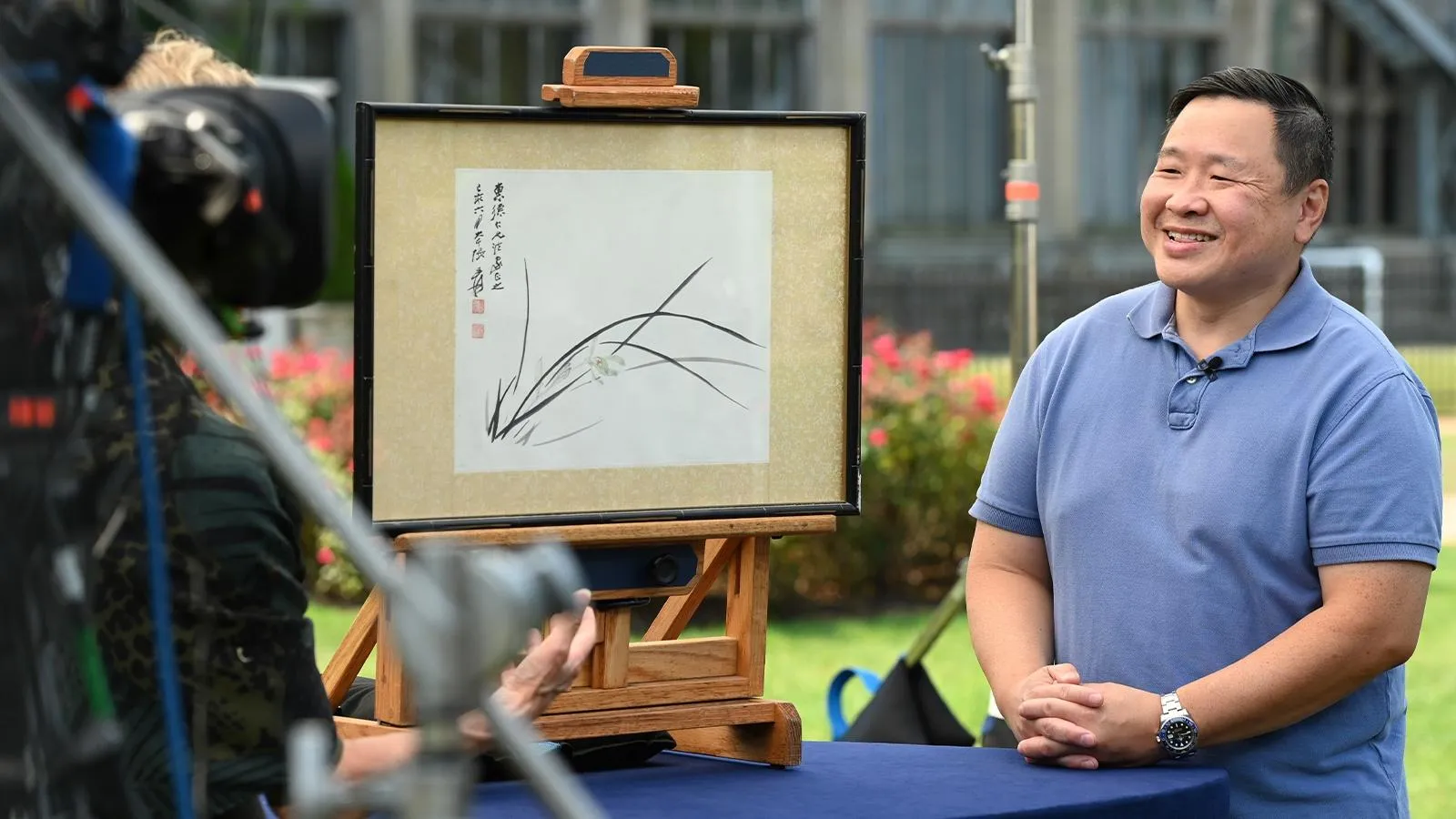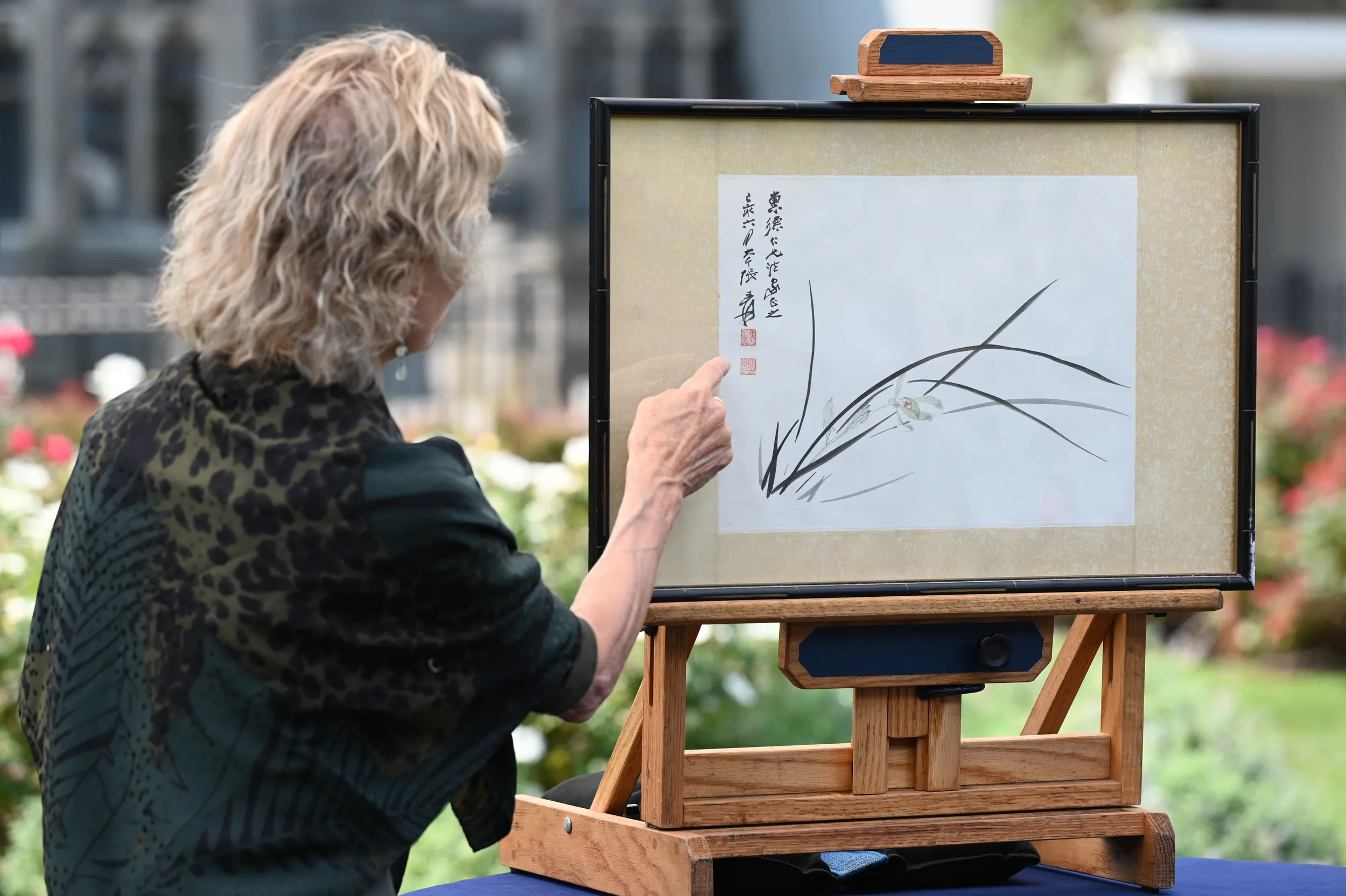GUEST: This painting was given to my grandfather for his birthday celebration, uh, around 1964. My mother's high school friend's father is a close friend of Zhang Daqian.
APPRAISER: Hm.
GUEST: So he reached out to Zhang Daqian to obtain a painting, to paint specifically for my grandfather's birthday, and was presented to him.
APPRAISER: And what was your grandfather's name?
GUEST: Wei Da.
APPRAISER: Yes, that's what I thought.
GUEST: Yes. Yes.
APPRAISER: Okay, it's... (speaking Chinese) This is what the first line says.
GUEST: Right.
APPRAISER: "Given to elder brother Wei Da for his perusal and appraisal." But the date of the painting is actually 1959.
GUEST: Wow!
APPRAISER: The combination here would be 1959, sixth month.
GUEST: Wow, okay.
APPRAISER: Okay?
GUEST: Okay.
APPRAISER: And then signed by the artist here, Daqian Zhang, and then his, um, classic signature.
GUEST: Right.
APPRAISER: With two seals of the artist.
GUEST: Right.
APPRAISER: Zhang Daqian was actually called the Picasso of the East.
GUEST: Oh, really?
APPRAISER: Yes.
GUEST: Okay.
APPRAISER: (chuckling) Yes. He was an amazing, amazingly prolific artist. He painted in many styles. Of course, his best-known style, which actually was generated through his love of Tang Dynasty blue-green landscapes. But later, because of his deteriorating eyesight, he developed into this what they call splashed-ink, blue-green po mo style, which, you know, have set record prices...
GUEST: Right.
APPRAISER: ...in the, in both the private and the auction world, in the millions and multi-millions of dollars. Zhang Daqian was born in 1899, and he was born in Sichuan Province to a family of a number of artists.
GUEST: Yeah.
APPRAISER: When he painted this painting in 1959, he was living in Brazil.
GUEST: Really? Oh.
APPRAISER: He left China in 1949 and traveled, did various exhibitions throughout the world, he was such an energetic person. Always dressed in classic Chinese long robes, with a very long beard.
GUEST: Right.
APPRAISER: Very distinguished.
GUEST: Right.
APPRAISER: He felt as though, if you painted an orchid, the orchid painting wasn't worth the paper that it was on unless it depicted the gracefulness of the leaves in the wind. And you can certainly see that here. This painting is executed in ink on paper. You can see the sweeping of the black ink in the graceful leaves of the cymbidium orchid, and also just the touch of color in the green blossoms of the single orchid. So within the context of the fact that this is an orchid painting and not a splashed-ink painting, and within the context that it was 1959, this piece would bring, have a pre-sale estimate at auction of $10,000 to $15,000.
GUEST: Thank you.
APPRAISER: An insurance value of this painting would be around $30,000.
GUEST: Wow, thank you. We are definitely going to keep this in the family. Yes.
APPRAISER: Fantastic, thank you very much.
GUEST: Thank you.













